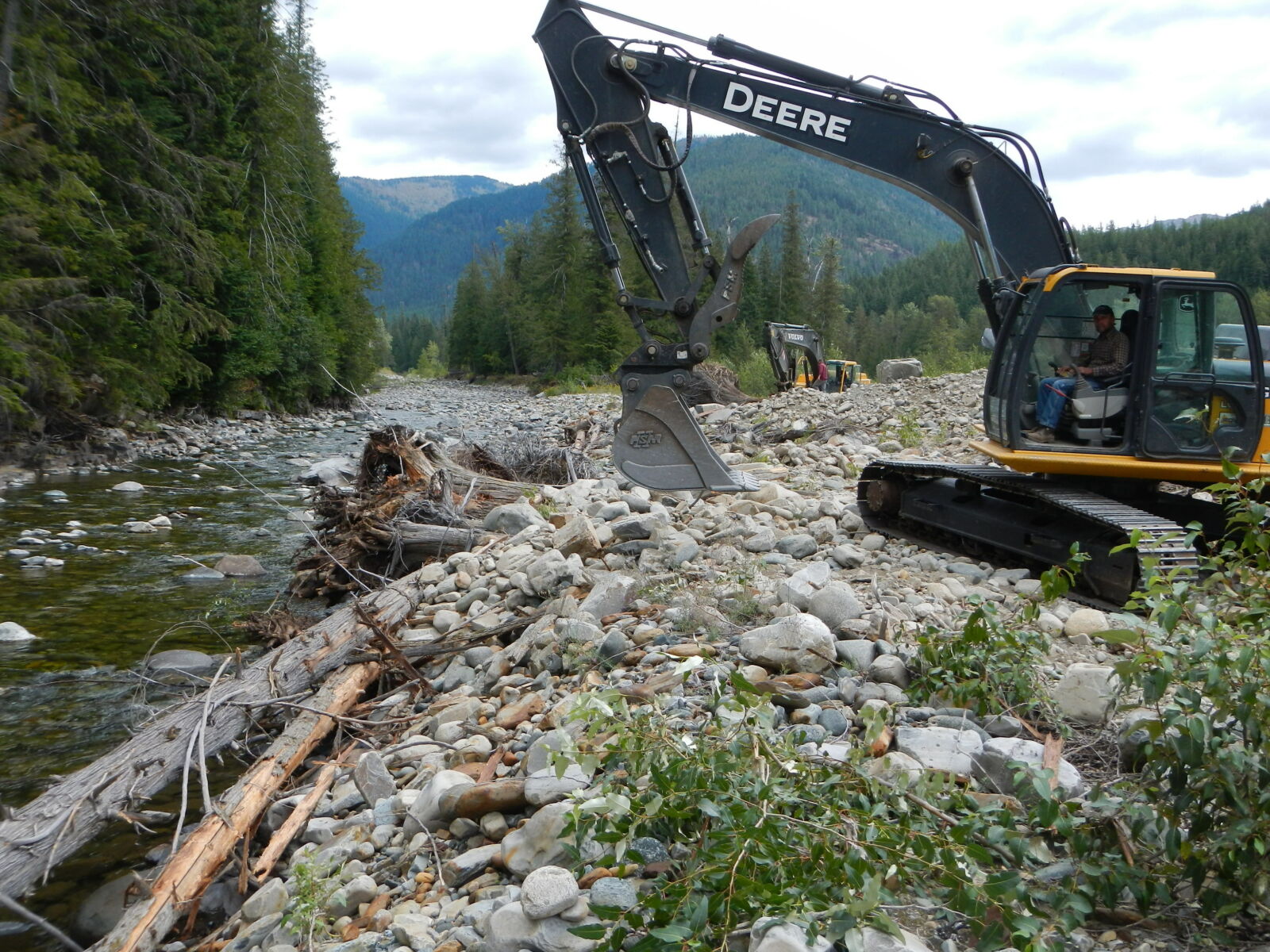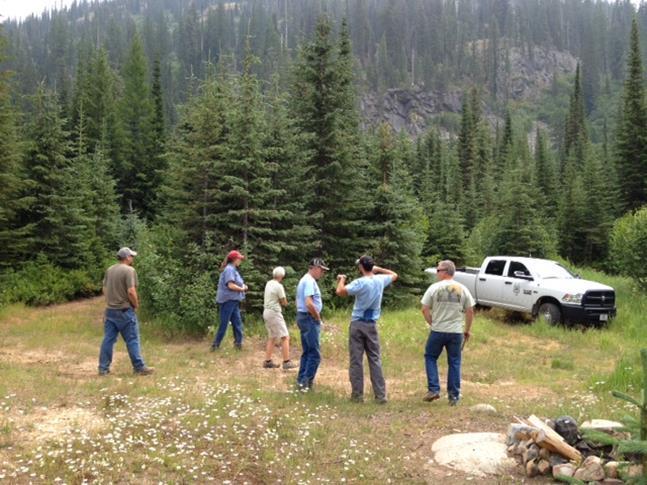The National Forest Foundation (NFF) has been working with the Idaho Panhandle National Forest (Forest Service) and local groups since 2012 in a partnership to improve conditions in Lightning Creek, near Clark Fork.
Stream Improvements
With the support of Avista, the NFF, Forest Service and Apex Construction (based out of Sagle, ID) are working to restore Lightning Creek’s natural contours and improve fish habitat. Apex began work in August, using heavy equipment to place logs and rootwads deep in the Lightning Creek stream channel. Mimicking natural features found in healthy streams, this woody debris will help hold sediment and rocks, creating pools and variety in aquatic habitat. The work should also dissipate water flow and lessen the impact of future floods. Streamside plantings will help stabilize the banks.

Weed Assessments and Treatment
Noxious weeds are causing a series of cascading problems in the Lightning Creek drainage. Over the past three years, NFF has been working with the Forest Service, Friends of Scotchman Peaks Wilderness and other local volunteers to monitor weed populations along Lightning Creek roads and trails. With a grant from the Equinox Foundation at Inland Northwest Community Foundation, the NFF hired a local company, The Idaho Weed Guy, to treat the weeds (mainly knapweed and goatweed) so that native species can rebound.
Winter Warming Hut
The NFF is working with local snowmobile groups, the University of Idaho Department of Architecture, Idaho Forest Group and the Forest Service to build a warming hut for winter recreationalists who utilize the 50 miles of area trails open to snowmobiling. U of I students will design and build the warming hut using lumber from Idaho forests, thanks to donations from the Idaho Forest Group.

BEETOP-ROUNDTOP TRAIL
The recent Hope/Sagle land exchange provided an opportunity to build a publicly-accessible, southside trailhead to the Beetop-Roundtop Trail. Offering views of Lake Pend Oreille and surrounding mountains and valleys, the trail is widely considered one of the most scenic in north Idaho. Due to the construction of a housing development, the trail’s south access has been closed to the public for the past 25 years. The NFF is working with the Forest Service and the Northwest Youth Corps to relocate the trailhead to public land, starting in September 2015. This project is funded in part by a grant from the Equinox Foundation at Inland Northwest Community Foundation.
PANHANDLE FOREST COLLABORATIVE—BUCKSKIN SADDLE PROJECT
The Panhandle Forest Collaborative provides opportunities for residents of north Idaho representing a variety of different interests – often conflicting – to actively participate in both
the planning and on-the-ground phases of restoration and vegetation management projects. Initiated in 2011, the Collaborative focuses primarily on the Sandpoint, Priest Lake and Coeur d’Alene Districts of the Idaho Panhandle National Forest. The goals of the Collaborative are to: reduce litigation; enhance travel and recreation opportunities; maintain infrastructure for timber, ranching and recreation; and conserve native ecosystems.
The Collaborative has supported the work in Lightning Creek and is beginning discussions with the Forest Service on a project called Buckskin Saddle, which is south of Clark Fork. Located in the drainage of the north fork of the Coeur d’Alene River, the project encompasses the Johnson, Twin and Dry Creek areas. The Collaborative welcomes involvement from anyone who is interested, and is planning a meeting on September 16th. For more information, go to the website at https://sites.google.com/site/panhandleforestcollaborative/home.

